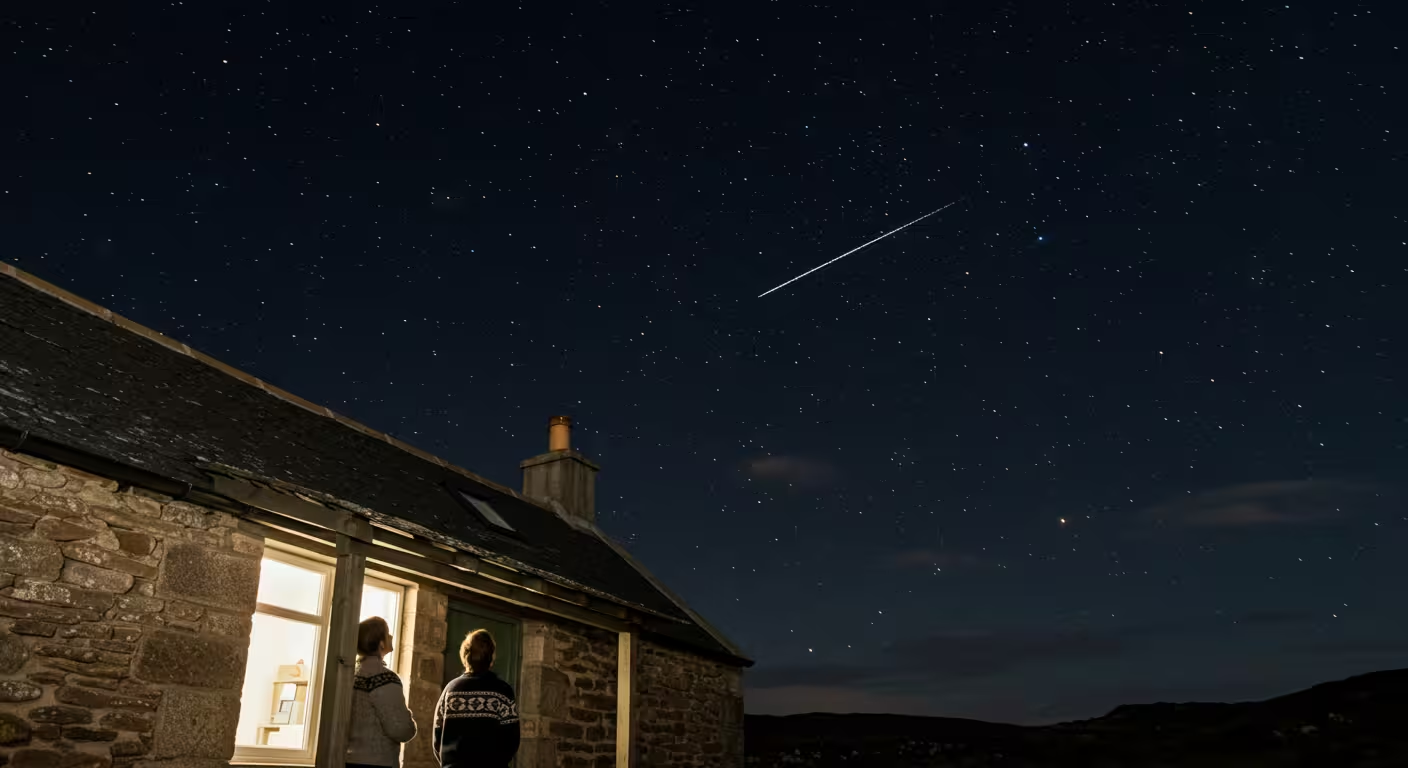Creative professionals and remote workers across Scotland are experiencing a transformation in connectivity, thanks to the advent of Starlink.
For years, rural regions struggled with sluggish broadband connectivity and the frustrations of the persistent digital divide, with many limited to outdated DSL that simply could not support the demands of modern remote jobs or creative work. Recent initiatives for digital inclusion are helping those most in need, underlining just how vital reliable access has become for Scotland’s progress.
With Starlink’s network expanding and becoming increasingly robust, even Scotland’s remotest railways are seeing the benefits of reliable satellite Wi-Fi. This means smoother video calls, faster cloud collaboration, and better access to hybrid remote job opportunities for residents outside the big cities.
As fresh government investment in connectivity continues, and satellite technology rapidly evolves, remote talent in Scotland is breaking free from postcode restrictions—enjoying the kind of connectivity previously reserved for urban centres.
What is the Digital Divide in Scotland?
The digital divide in Scotland is the gulf separating those with access to fast, reliable broadband and those still limited by slow or patchy internet connections, a problem most clearly seen between well-served urban centres and rural areas in the Highlands, Islands, and lowlands. Urban Scotland now enjoys widespread gigabit-capable broadband, but this progress hasn’t reached every corner, leaving thousands of homes and businesses with inadequate speeds that hinder everyday tasks and professional obligations.
For web designers needing to send large files, filmmakers uploading 4K footage, or freelancers connecting via video call, these challenges can mean missed opportunities and stunted growth, with Ofcom figures revealing just 44% of rural Scottish communities have full-fibre coverage compared to 71% of urban ones.
Deploying traditional digital infrastructure in remote regions remains economically difficult, and the Project Gigabit initiative is working to level up Scotland’s rural connectivity, aiming to deliver ultrafast broadband to tens of thousands of previously excluded properties.
Schemes such as R100 SBVS and efforts by providers like WiFi Scotland are bridging the gap, even as local business owners and remote workers emphasise the need for further action. Until every Scottish postcode enjoys affordable, high-speed internet, this digital divide risks holding back not only individual careers but also the wider economy and resilience of Scotland’s communities.
How does Starlink Actually Work?
Starlink’s technology fundamentally differs from traditional satellite internet through its use of low Earth orbit (LEO) satellites, positioned around 550 km above the Earth, compared to geostationary satellites that orbit at about 35,000 km.
The following video from RealPars on Youtube, offers a detailed explanation on how Starlink actually works.
This dramatic reduction in altitude means data travels a much shorter distance, leading to significantly lower latency—often as low as 20-40 milliseconds—comparable to land-based fibre connections and far superior to the frustratingly high latency found in older systems, which causes delays detrimental to video conferencing and online gaming.
Starlink’s constellation of thousands of small satellites also enables a robust network that can deliver reliable high-bandwidth internet even in remote areas where traditional infrastructure is impractical.
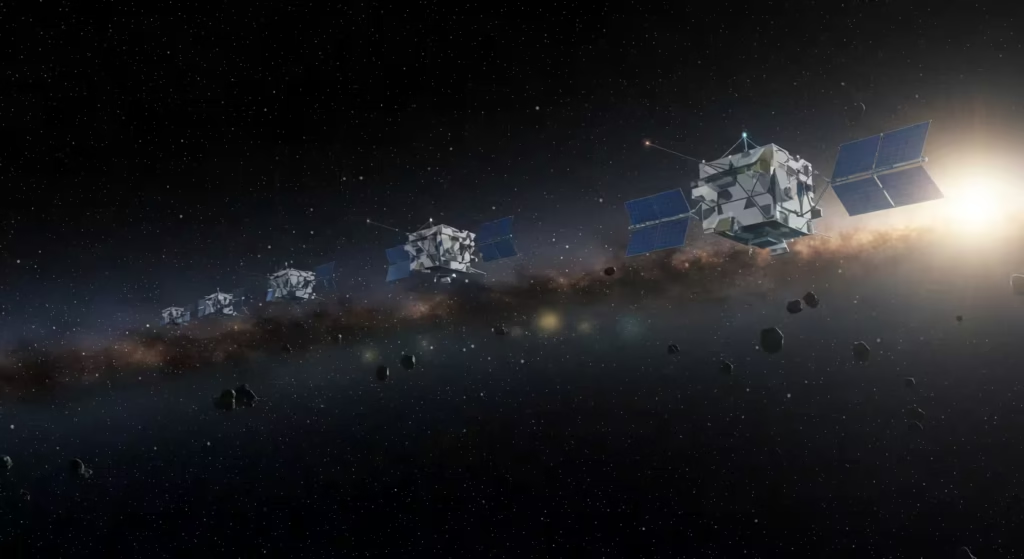
In addition to proximity, Starlink maintains consistent, high-quality connections by using sophisticated phased-array antennas on user terminals, also referred to as “Dishy,” which dynamically follow satellites overhead.
Some satellites employ optical inter-satellite links via lasers, allowing data to be routed efficiently across the globe without relying solely on ground stations, ensuring seamless performance. This mesh network approach and cutting-edge hardware offer a strong alternative to older VSAT (very small aperture terminal) satellite internet, making Starlink a compelling choice for people in rural and underserved locations seeking fast, low-latency broadband.
What Internet Speeds Can You Really Get with Starlink in Scotland?
Consistent upload and download speeds are equally important for creative professionals when it comes to delivering huge design files or backing up work to cloud storage. What is Starlink’s performance like where it counts?
A clear Starlink evaluation for prospective customers is provided by the following table, which shows the average performance you may anticipate based on actual data and user reports from all throughout Scotland.
| Metric | Typical Performance in Scotland | Suitability for Professional Work |
|---|---|---|
| Download Speed | 75 – 220 Mbps | Rapidly download asset libraries, software updates, and high-resolution video. Ideal for high-speed internet in the Highlands. |
| Upload Speed | 8 – 25 Mbps | Efficiently send large design mockups, website packages, and video files to clients, transforming file transfer for Scottish freelancers. |
| Latency (Ping) | 25 – 50 ms | Enables smooth video conferencing, real-time collaboration on design platforms, and responsive remote access to office systems. |
In Scotland, these Starlink speeds mark a significant advancement in rural broadband. They enable things like faultless video conferencing from Scotland, steady internet gaming, and fluid 4K streaming. It is crucial to remember that speeds can differ, just like with any other service.
Reduced rates may be observed during evening peak usage hours, and service may be momentarily impacted by things like trees, buildings, or extreme Scottish weather. Nonetheless, the performance is more than adequate for the majority of remote work Scotland settings.
Is Starlink Good for Remote Work and Creative Professionals?
Starlink’s mix of reasonable upload rates, minimal latency, and rapid download speeds solves important connectivity issues, making it ideal for creative professionals and remote workers. For instance, filmmakers in Shetland may submit big project files in minutes rather than hours or overnight, while web design companies in Inverness can use cloud-based AI design tools without any lag. Starlink provides smooth file sharing and collaboration, which are essential for creative operations. Upload speeds normally range from 10 to 40 Mbps, with some customers experiencing even higher rates.
These speeds, alongside latency often between 20 to 40 milliseconds, mean video calls, online presentations, and cloud computing run smoothly, eliminating frustrating connection drops during critical moments. This level of performance helps make a digital nomad lifestyle in Scotland a viable option beyond urban centres, enabling talent to thrive from any location with consistent internet access.
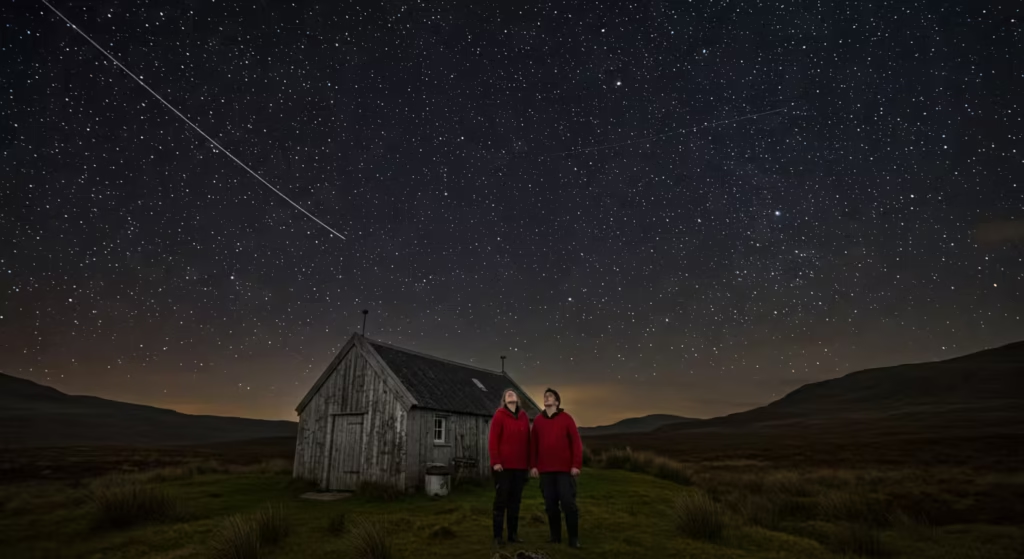
Even in rural or distant places where standard broadband suffers, Starlink’s technology—thousands of low Earth orbit satellites and sophisticated user terminals—offers strong coverage and dependability.
For professionals who largely rely on cloud services and broadband workflows, Starlink’s network infrastructure and ongoing upgrades provide a reliable, high-capacity connection, in contrast to previous satellite internet systems with high latency and restricted bandwidth.
This dependability supports tasks like transferring massive multimedia files, producing cloud-based graphics, and maintaining uninterrupted, stable communication streams, all of which are critical for Scotland’s remote jobs and creative economy.
Scottish creatives and enterprises can fully embrace digital opportunities wherever they are thanks to Starlink, which frees remote workers from location restrictions.
How Do You Set Up Starlink in a Rural Scottish Location?
Setting up Starlink in a rural Scottish location is designed to be a straightforward, user-friendly process that greatly simplifies connectivity for remote areas. The first step is to check Starlink availability for your address in Scotland and order the necessary hardware from Starlink’s official website.
The following video from CNET on Youtube, provides step-by-step instructions on how to set up the device.
The main component, known as “Dishy,” is an all-in-one satellite dish that requires a clear, unobstructed view of the sky—typically placed on a roof, garden pole, or a suitable wall. Using the Starlink app, you can leverage augmented reality to scan for the best positioning free from obstructions like trees or buildings, making self-installation plausible even in challenging locations.
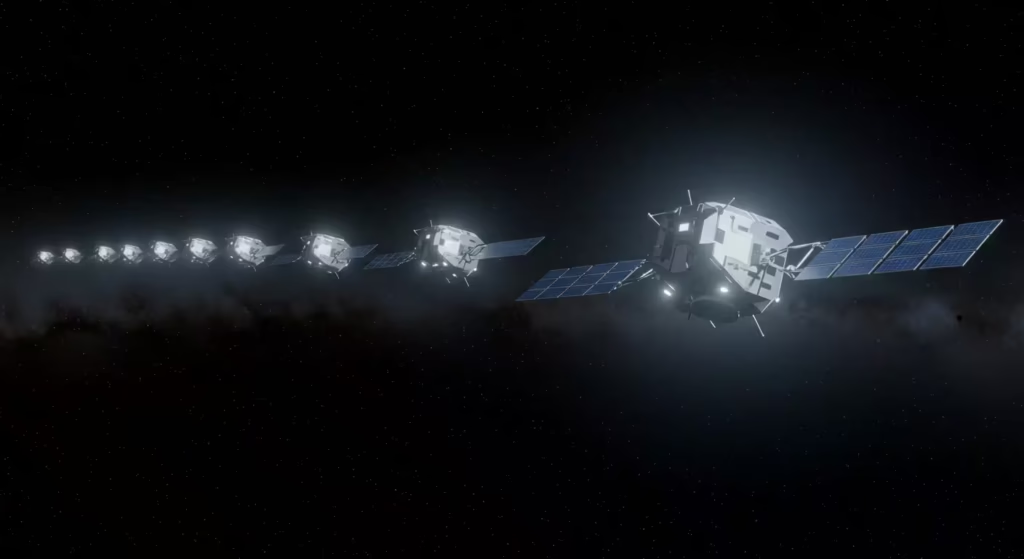
For those who prefer professional help or face particularly tricky geography, a growing number of expert Starlink installation services across Scotland offer full setups including mounting, weatherproof cabling, router configuration, and WiFi optimisation.
In order to install the dish, you must physically assemble it, secure it in the best location, route and link wires into your house or place of business, then configure WiFi settings using an app for dependable, safe access.
Many view this as a worthwhile investment for state-of-the-art satellite internet that significantly expands connectivity in even the most remote Scottish glens and islands, even though the initial Starlink equipment comes with upfront costs plus a monthly subscription fee, which is usually justified by the transformative boost in broadband quality.
Starlink vs. Other Broadband Options in Rural Scotland
When considering the best internet Scotland has to offer for remote areas, it is helpful to compare the options available. For many, the choice is between Starlink, traditional satellite internet, and 4G/5G home broadband.
Starlink vs. Traditional Satellite in Scotland
As previously discussed, Starlink’s LEO network is better for real-time applications because it has far lower latency and faster bandwidth. In terms of contemporary satellite internet options, it is the undisputed victor.
Starlink vs. 4G/5G in Scotland
If you have a steady, strong signal, mobile broadband can be a viable option. However, cell coverage is either nonexistent or very poor in many areas of the Scottish islands and glens, and speeds can vary greatly and frequently experience data caps. Starlink is a more dependable option for a home office since it offers a stronger and more continuous connection that is not reliant on mobile mast coverage.liable choice for a home office.
Our Real-World Starlink Journey Across Scotland
Last month, we had the opportunity to take our new Starlink kit on the road, traveling to some of Scotland’s most challenging connectivity hotspots. After extensive use, here are our first-hand findings:
Starlink Connectivity in Sutherland, Scotland
On Scotland’s remote north coast, miles from the nearest phone signal, we set up in a cottage overlooking the sea. While 4G was non-existent, Starlink delivered a consistent 150 Mbps download. We held a flawless video call on Zoom with a client who was based in the City of London while gazing out at the North Atlantic—a true “pinch-me” moment for remote workers all across Scotland.
Starlink Connectivity in Edinburgh
Much of our design work for the Edinburgh Festival is produced from a Georgian building in the historic Old Town, notorious for Wi-Fi blackspots due to its thick stone walls. Before Starlink, uploading large marketing assets and festival programmes during the critical pre-event crunch was a nightly struggle.
Placing the dish in a secluded courtyard changed everything. It connected through the thick stone walls effortlessly, giving us a stable 110 Mbps connection where our phones struggled to get a single bar, ensuring last-minute client amendments and sending over large file transfers were completely stress-free.
Starlink Connectivity in Central Glasgow
You might wonder why you’d need it in the centre of Glasgow? We had the opportunity to test it in a top-floor flat, next to Merchant City (just off Buchanan Street) surrounded by other buildings. The result? We hit a rock-solid 180 Mbps, completely bypassing the congested local Glasgow broadband infrastructure during peak evening hours. So, although local internet would be the more economical option, there is something incredibly ‘cool’ about connecting to Starlink in the centre of Glasgow.
Starlink on the Isle of Eigg
On this beautiful, community-owned island off the west coast of Scotland, traditional options are limited. That said, within 15 minutes of setting off from the ferry, we had a live connection. We tried uploading a 1GB video file from the beach which took under two minutes. That’s a task that would have been previously unthinkable for the Isle of Eigg’s creative residents.
A Creative Hub in a Cairngorms Croft
We spent a week working from a converted croft near Boat of Garten in the Cairngorms National Park. With the dish mounted on a garden fence, we seamlessly used cloud-based design software and streamed media in the evenings. It transformed a peaceful retreat into a fully functional, high-productivity office.
Starlink Reception on the Knoydart Peninsula
This was always going to be the toughest of our location tests! While hiking in the remote Knoydart Peninsula, we used the Starlink Roam plan at a bothy. We weren’t rendering video, but we reliably sent messages, checked maps, and even uploaded a few photos to social media. It was a powerful demonstration of its value as an emergency communication backup in the wildest parts of Scotland.
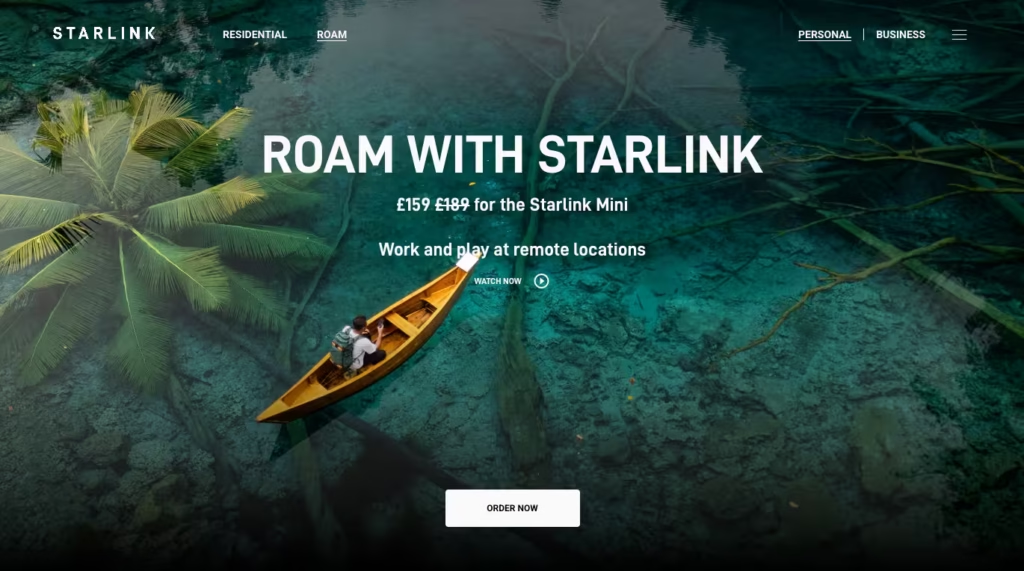
What do Scottish Creatives feel about Starlink?
When living and working in the Highlands, poor connectivity isn’t just an inconvenience — it can seriously hold you back from completing your goals. Iona MacLeod, a freelance graphic designer based in Fort William, shares what life was like before and after getting Starlink:
“As a graphic designer who moved back to my family’s home in Lochaber, my business was stuck in the slow lane. I was spending nights uploading client files. Getting Starlink was my last roll of the dice. I was so chuffed the moment I saw it hit 200 Mbps download from my back garden, it was a weird feeling of relief and excitement! Now, I can collaborate on live documents with clients in real-time and use online design portals without a hint of lag. Gone are the days of waiting 2 hours for a video to upload”
— Iona MacLeod, Freelance Graphic Designer, Fort William
5 Ways Starlink is Empowering Scottish Businesses and Freelancers
As we look towards the autumn, the impact of reliable, high-speed internet on rural economies will only grow. Here are five specific ways Starlink is making a difference right now across Scotland.
1. Starlink and Cloud-Based Creative Workflows
Setting up Starlink in a rural Scottish location is designed to be straightforward and accessible. Start by checking Starlink availability for your address and ordering the Starlink hardware kit. The core piece, known as “Dishy,” is an all-in-one satellite dish that needs a clear view of the sky, typically installed on a roof, garden pole, or wall.
The easy-to-use Starlink app helps locate the best installation spot using its “Check for Obstructions” tool with augmented reality to avoid trees or buildings, ensuring optimal signal reception.
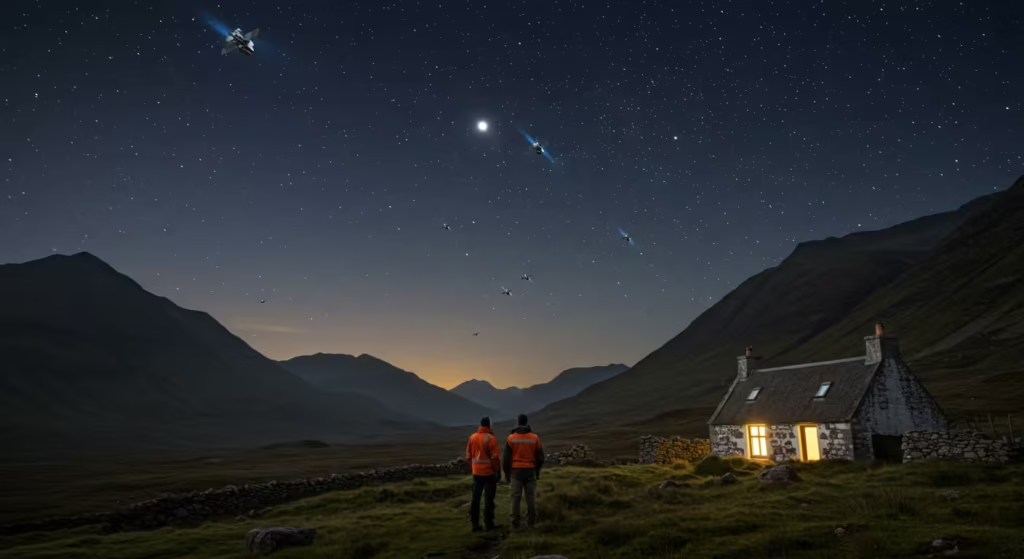
Once the dish arrives, assembly involves placing it on the mounting base and connecting the provided cable to the router, followed by plugging in the power supply. The dish automatically aligns itself to Starlink’s satellites to establish a strong connection. For those preferring professional support, Starlink installation services across Scotland offer expert setup including mounting, cabling, and optimisation, especially useful in challenging terrains.
The upfront cost covers equipment and setup, with a monthly subscription to the service, making Starlink a highly worthwhile investment for reliable high-speed internet even in remote Scottish locations.
2. Facilitating Flawless Client Communication
Crisp, uninterrupted video conferencing from Scotland is a game-changer for businesses, enabling seamless client communication that builds trust and professionalism. Starlink’s business-grade satellite internet offers the high speeds and low latency needed to support smooth video calls via platforms like Zoom, Teams, and Skype, even in rural or remote Highlands locations where traditional internet often falters.
This reliable connectivity ensures that businesses can compete globally without ever leaving their remote offices or homes, fostering real-time collaboration and client engagement crucial for success.
Professional Starlink installation services in Scotland help set up fast, stable internet connections specially optimised for video conferencing and other bandwidth-intensive tasks, eliminating the frustration of dropped calls or buffering. From urban centres like Edinburgh and Glasgow to remote spots, high in the Cairngorms, these services are helping to bring a higher-quality internet to areas that previously faced connectivity challenges.
With Starlink, Scottish businesses are now able to maintain a professional edge by facilitating flawless client communication, driving growth and opportunity without geographical limits due to their location.
3. Supporting the Digital Nomad Economy
The breathtaking landscapes of the Isle of Skye, Orkney, and the Outer Hebrides are becoming increasingly attractive long-term bases for digital nomads in Scotland, who bring valuable skills and income to local communities. Scotland’s combination of affordable living costs, stunning natural environment, and improving digital infrastructure, such as the rollout of fast broadband and satellite internet options like Starlink, is transforming these remote areas into viable work-friendly hubs. Digital nomads, who often work in tech, creative industries, and remote business roles, can enjoy the unique lifestyle benefits while staying fully connected for work.
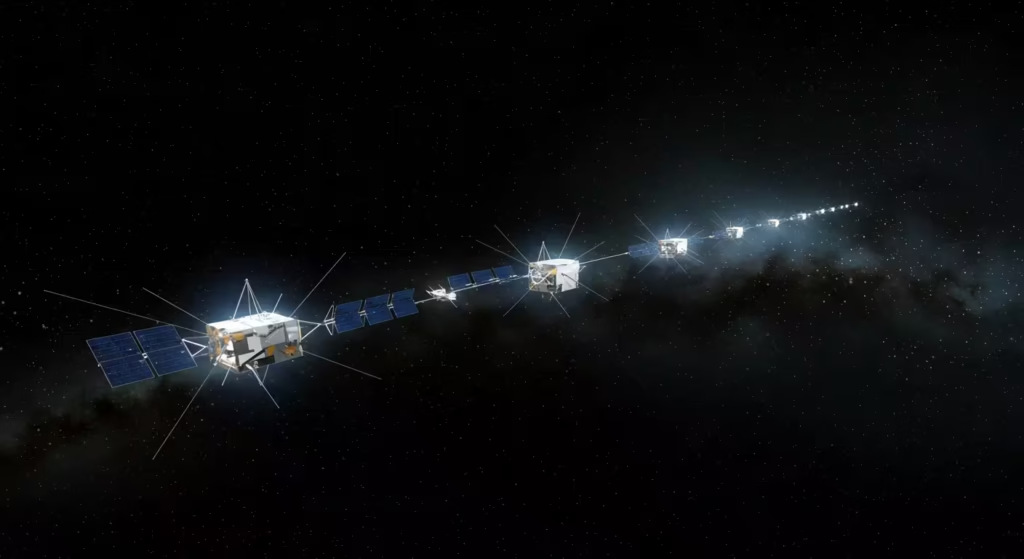
Statistics show that around 22% of Scottish professionals are fully remote, with many embracing hybrid models, and the country’s emphasis on boosting remote work infrastructure further supports this trend.
Local economies are boosted by the rise of coworking spaces and expanding communities of digital nomads in these picturesque locations, which provide services, lodging, and coffee shops to meet the needs of this mobile workforce.
Scotland’s position as a top destination in 2025 for people looking to combine work and adventure in breathtaking settings is being cemented by this combination of technology, lifestyle, and community involvement.
4. Unlocking New Opportunities for Island Businesses
Businesses on Scotland’s islands are unlocking new digital opportunities thanks to improved connectivity through Starlink and other satellite broadband options. Remote B&Bs in Scotland can now efficiently manage online bookings, enabling seamless customer experience and global marketing reach. Furthermore, local craftspeople and artists in places like Orkney and the Outer Hebrides can upload high-resolution product videos and engage with e-commerce platforms to expand their market beyond traditional boundaries.
This shift is transforming island economies, allowing businesses to fully participate in the vibrant digital marketplace, which was once restricted by poor internet infrastructure.
In support of this, initiatives such as the Scottish Broadband Voucher Scheme (SBVS) help island businesses afford the latest satellite broadband equipment and installation costs. Projects like the Starlink-powered onboard Wi-Fi for Orkney ferries also enhance operational efficiency and customer experience for island transport services.
These technological advances mean that island enterprises, whether hospitality, arts, or retail, can thrive by harnessing reliable internet access, boosting Scotland’s wider rural and island economy.
5. Future-Proofing the Rural Economy
Future-proofing the rural economy in Scotland hinges on robust internet infrastructure, and Starlink’s constellation of low Earth orbit satellites is playing a pivotal role in ensuring that rural communities are not left behind as services move increasingly online.
This technology supports essential sectors such as healthcare, remote education, and local business operations by delivering reliable, high-speed internet where traditional fibre or cable infrastructure is impractical. For example, ScotRail’s high-speed internet initiative uses Starlink technology to provide Wi-Fi on trains servicing remote routes across the Highlands, enhancing connectivity on the move.
Starlink offers speeds up to 220 Mbps with low latency between 20-40 milliseconds, bringing fibre-like performance to remote areas and helping bridge the digital divide that has long hindered rural economic growth. By enabling access to digital marketplaces, telehealth services, and virtual learning, Starlink helps ensure sustainable, inclusive development across Scotland’s rural and island communities.
This reliable connectivity lays the foundation for long-term resilience, allowing Scotland’s rural economy to adapt and thrive to compete with heavily urbanised regions, driving equitable growth for years to come.
In Summary
The future of internet in Scotland is no longer solely dependent on digging trenches for fibre cables. With Starlink and other LEO satellite networks, the sky is quite literally the limit. For those who have struggled for years with inadequate connections, this technology is not just an upgrade; it is a revolution, finally bridging the digital divide and ensuring that where you choose to live in Scotland does not dictate your ability to connect, create, and thrive.
For more insight into Scotland’s one-of-a-kind tech challenges, check out our article The Future of Design and Technology in the Scottish Highlands lays out a vision where even remote corners of Scotland become living laboratories — from 5G innovation hubs to AI chatbots guiding castle-visitors, from AR storytelling to eco-smart infrastructure.
